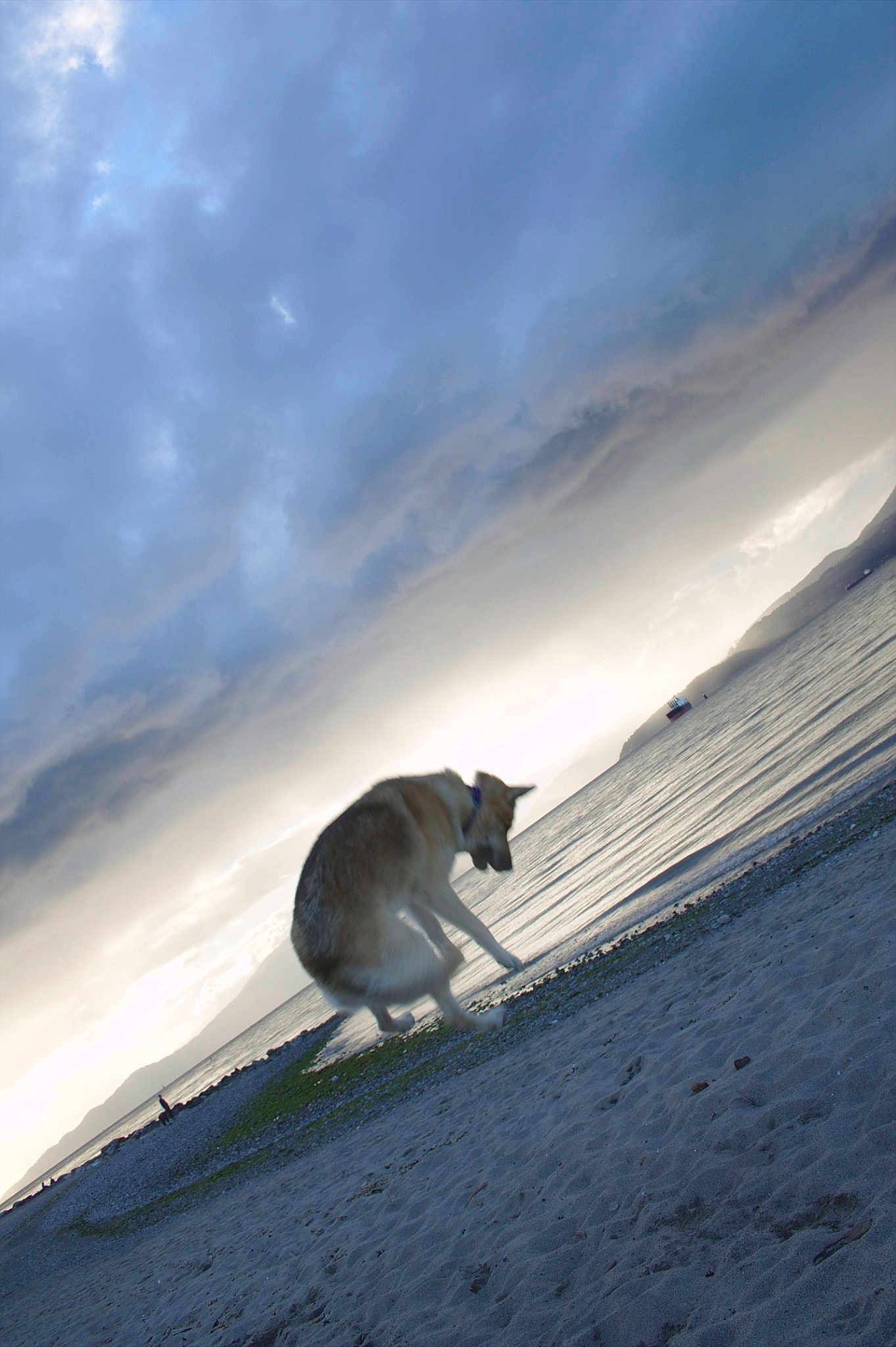
"The Saarloos Wolfdog: A distinct combination of wild and domestic grace, this breed embodies the spirit of the wilderness in a domesticated companion."
Personality and Behavior of the Saarloos Wolfdog
The Saarloos Wolfdog, with its wolf-like appearance and unique temperament, is a breed that truly stands out. Developed by Dutch breeder Leendert Saarloos in the early 20th century, this breed was intended to combine the best traits of wild wolves and domestic dogs. The resulting Saarloos Wolfdog is known for its loyalty, independence, and reserved nature.
Among the most captivating traits of the Saarloos Wolfdog is its loyalty to its family. These dogs form strong, deep bonds with their owners and are often reserved or aloof with strangers. This can make them excellent watchdogs, as their instinct is to protect their territory and loved ones.
Despite their protective nature, Saarloos Wolfdogs are known for their gentle demeanor. They typically do not display aggressive behavior without provocation and are more likely to retreat from confrontation than engage in it. This breed is also highly intelligent and has a strong problem-solving instinct, which can make training both a rewarding and challenging experience.
Lastly, the Saarloos Wolfdog carries an intrinsic need for social interaction, particularly with its human family. They thrive on companionship and can become distressed if left alone for long periods. This need for closeness means they are best suited for experienced dog owners who have the time and commitment to meet their unique emotional needs.
"Unlike many other breeds, the Saarloos Wolfdog retains a strikingly clear communication style, often emitting a range of sounds that mirror their wild ancestors, from howls to expressive vocalizations."
Meanings, History and Origins of the name Saarloos Wolfdog
The name Staarloos Wolfdog is a testament to its creator, Leendert Saarloos, who embarked on a mission to breed a dog that encompassed the virtues of both wild wolves and domestic canines. Saarloos aimed to reintegrate the vigor and wild instincts of wolves into the more docile nature of domestic dogs.
Originating in the Netherlands in the 1930s, Saarloos crossed a German Shepherd with a European wolf, hoping to create a new breed that retained the desirable traits of both lineages. The resulting offspring were then further bred with German Shepherds to stabilize the new breed's traits. Officially recognized in 1975 by the Federation Cynologique Internationale (FCI), the Saarloos Wolfdog stands as a tribute to its pioneering breeder's vision.
The breed's name reflects its dual heritage: "Wolfdog" indicates its wild ancestry, while "Saarloos" honors the breeder who dedicated his life to creating this unique canine. The origin and purpose of the breed can often intrigue dog lovers and spark a conversation about the balance of wild instincts and domestication.
Popularity of the Saarloos Wolfdog
While not as commonly found as some other breeds, the Saarloos Wolfdog has garnered a dedicated following among dog aficionados who appreciate its wolf-like traits and unique personality. This breed's rarity can be attributed to its specific care needs and the commitment required from its owners.
In English-speaking countries, the Saarloos Wolfdog remains somewhat of a niche breed, attracting those who are fascinated by its physical resemblance to wolves and its loyal, protective nature. Though not widespread, its distinct appearance and temperament make it a notable breed among enthusiasts and in select canine circles.
Internationally, the Saarloos Wolfdog enjoys moderate popularity, especially in Europe where its origins lie. Countries such as the Netherlands, Germany, and Belgium have a more established presence of this breed, largely due to proximity to its creation. Breeders and owners in these regions are well-versed in the particular needs and quirks of the Saarloos Wolfdog, helping to foster a stable and supportive community for this special breed.
Health and Care of the Saarloos Wolfdog
Health-wise, the Saarloos Wolfdog is generally robust, owing much to its wolf heritage. However, it is not entirely free from health concerns. Common issues include hip dysplasia and degenerative myelopathy, both of which are also common in German Shepherds, one of its ancestral breeds. Regular vet check-ups and screenings are essential to catch any potential health problems early.
Dietary needs for the Saarloos Wolfdog are quite specific. A balanced diet rich in proteins and low in grains is ideal, reflecting their carnivorous ancestry. High-quality commercial dog food or a carefully planned raw diet can both be suitable, but it's important to consult with a veterinarian to ensure all nutritional requirements are met.
Overall care for the Saarloos Wolfdog involves more than just physical health. Their mental well-being is equally important. As a breed with high intelligence and a strong pack instinct, they require a stimulating environment and regular mental challenges to thrive. Interactive toys, training exercises, and plenty of physical activity are key components to keeping a Saarloos Wolfdog happy and healthy.
Training and Education of the Saarloos Wolfdog
Training a Saarloos Wolfdog can be a rewarding endeavor, but it comes with its own set of challenges. Due to their independent nature and high intelligence, these dogs may not respond to traditional training methods that rely heavily on repetition and obedience. Instead, positive reinforcement and consistency are crucial.
Early socialization is particularly important for the Saarloos Wolfdog. Exposing them to a variety of people, environments, and other animals from a young age can help mitigate some of their more reserved tendencies. This breed also benefits from structured activities that engage their problem-solving skills, such as agility training and obedience courses.
A common challenge faced by Saarloos Wolfdog owners is their dog's instinctual behaviors, such as howling or digging, which can be traced back to their wild relatives. Understanding and working with these natural instincts, rather than against them, can lead to a more harmonious relationship between the owner and the dog.
An important aspect of training is the establishment of a clear and consistent leadership role. Saarloos Wolfdogs need to understand their place within the family unit (or "pack") and look to their owner for guidance and direction. Without this structure, they may become confused or attempt to assert themselves, leading to behavioral issues.
In choosing the right dog for your lifestyle, consider factors such as your availability, the amount of space you can provide, and your willingness to meet the specific needs of the breed. The Saarloos Wolfdog can be an excellent match for experienced dog owners who lead active lifestyles and have a deep appreciation for the breed's unique characteristics.
The Saarloos Wolfdog offers a lasting significance through its unique blend of wild and domestic qualities. At KingPet, we have a lot of Saarloos Wolfdogs participating in our contests, showcasing their stunning appearance and strong, loyal personalities. Choosing a Saarloos Wolfdog as your companion can be a rewarding experience, providing both challenge and fulfillment in equal measure.




